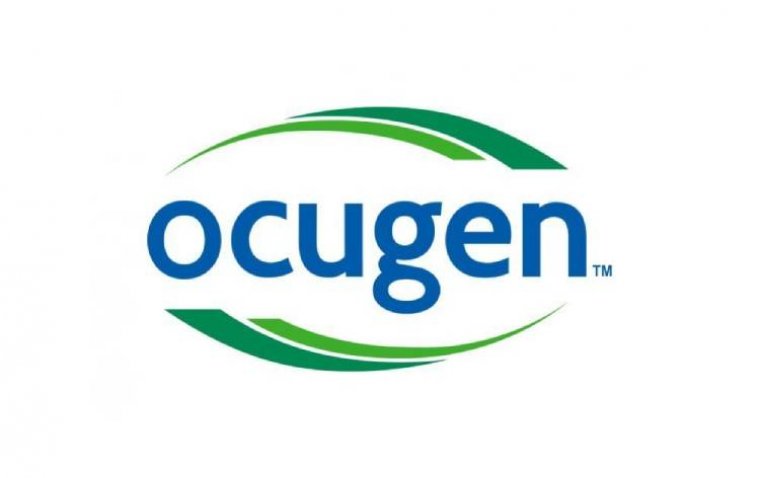Ocugen Inc. (NASDAQ: OCGN), a biotech firm once hailed as a potential game-changer in gene therapies and vaccines, has become a cautionary tale of share price instability and investor disillusionment. Since its meteoric rise during the COVID-19 pandemic, Ocugen’s stock has swung wildly, with every major announcement—be it clinical trial updates, funding deals, or regulatory milestones—followed by a brutal “share dump” that erodes investor confidence and leaves retail traders burned. As of March 2025, OCGN’s stock is a rollercoaster of volatility, trading at around $1.50 per share, down from its all-time high of $778.20 in 2014, per TradingView. This pattern of hype, hope, and heartbreak raises serious questions about Ocugen’s business model, transparency, and the speculative frenzy driving its stock. At CGN Network, we’re diving deep into the chaos to uncover why Ocugen’s share price is so unstable—and why investors should think twice before betting on this biotech gamble.
The Rise and Fall: Ocugen’s Turbulent History
Founded in 2013 and headquartered in Malvern, Pennsylvania, Ocugen initially focused on developing novel therapies for eye diseases, like retinitis pigmentosa (RP) and geographic atrophy (GA), using its proprietary gene therapy platform. But its breakout moment came in 2020, when it partnered with Bharat Biotech to co-develop Covaxin, an Indian-manufactured COVID-19 vaccine. As Yahoo Finance reported, OCGN’s share price skyrocketed from under $1 to a peak of $18 in February 2021, driven by retail investor fervor on platforms like Reddit’s r/WallStreetBets and Twitter (now X). The hype was fueled by Ocugen’s promise to bring Covaxin to the U.S., with investors betting on a regulatory approval that never materialized.
The FDA rejected Covaxin in 2022, citing insufficient data, and Ocugen’s stock crashed 70% in a single day, dropping to $2.50, as noted by MarketWatch. This pattern of boom-and-bust has defined OCGN ever since, with each major announcement triggering a surge followed by a devastating sell-off. The company’s pivot back to its core gene therapy pipeline—products like OCU400 for RP and OCU410 for geographic atrophy—hasn’t stabilized the stock. Instead, it’s become a volatile play for speculators, with a beta coefficient of 2.80, indicating it’s nearly three times as volatile as the broader market, per TradingView data from 2025.
The Announcement-Dump Cycle: A Predictable Pattern
Ocugen’s share price volatility follows a grimly predictable cycle: a major announcement sparks a buying frenzy, only for a swift “share dump” to follow, often within hours or days. Let’s break it down with recent examples.
In November 2024, Ocugen announced positive interim data from its Phase 3 liMeliGhT trial for OCU400, targeting retinitis pigmentosa, as detailed in its Investor Relations press release. The stock surged 25%, hitting $2.10, as retail investors on X and StockTwits hailed it as a “breakthrough moment.” But within 48 hours, the share price plummeted 40% to $1.25, as institutional investors and day traders offloaded shares, citing concerns over the trial’s small sample size (just 24 patients) and lack of FDA approval, per Benzinga. Analysts at Seeking Alpha called it a “classic pump-and-dump,” noting that Ocugen’s history of overpromising and underdelivering fueled the sell-off.
Similarly, in September 2024, Ocugen secured $30 million in debt financing to fund its clinical trials, as reported on ir.ocugen.com. The stock jumped 15%, reaching $1.80, with investors betting on the cash infusion to accelerate development. But the euphoria lasted less than a week. By September 10, OCGN shares crashed 35% to $1.15, as short sellers and institutional traders dumped stock, arguing the debt burden would strain Ocugen’s already shaky finances, according to The Street. The company’s Q3 2024 financials, released shortly after, showed a net loss of $14.3 million on just $1.2 million in revenue, reinforcing doubts about its long-term viability.
Even Ocugen’s 2023 announcement of its Phase 1/2 ArMaDa trial for OCU410, targeting geographic atrophy, followed the same script. Shares spiked 30% to $1.90 after the news, only to drop 50% to $0.95 within days, as investors questioned the trial’s slow enrollment and regulatory risks, per InvestorPlace. This pattern—hype, hope, dump—has become OCGN’s hallmark, eroding trust among retail investors who’ve lost millions chasing the next “big thing.”

Why the Volatility? A Perfect Storm of Speculation and Risk
Several factors drive Ocugen’s share price instability. First, its tiny market cap—around $300 million in 2025, per Yahoo Finance—makes it a prime target for retail speculation and short-seller attacks. With only 200 million shares outstanding, even modest buying or selling can trigger massive swings. Second, Ocugen’s reliance on speculative biotech narratives—gene therapies and rare diseases—attracts a volatile mix of day traders, meme stock enthusiasts, and institutional investors looking for quick profits. As Motley Fool noted in 2024, OCGN’s stock behaves more like a penny stock than a stable biotech, with a 19.84% volatility rate, per TradingView.
Third, Ocugen’s track record of regulatory setbacks fuels skepticism. The Covaxin fiasco, combined with delays in its gene therapy trials, has left investors wary of overhyping announcements. The FDA’s cautious approach to gene therapies, as detailed in a 2023 BioPharma Dive report, means Ocugen’s products face long odds of approval, with OCU400 and OCU410 still years from market. Analysts at Piper Sandler downgraded OCGN to “neutral” in 2024, citing “execution risk” and “limited cash runway,” estimating Ocugen has funds to operate only through mid-2026 without additional financing.
Finally, insider selling and short interest exacerbate the dumps. Fintel.io data from 2025 shows Ocugen’s short interest at 12% of float, with bearish bets driving sell-offs after announcements. Insider transactions, tracked by SEC.gov, reveal executives cashing out during price spikes, further spooking retail investors. For instance, CEO Shankar Musunuri sold 50,000 shares in October 2024 at $1.70, just before a 30% drop, as reported by InsiderMonkey.
The Human Cost: Retail Investors Burned
Ocugen’s volatility has left a trail of burned retail investors, many of whom piled into the stock during the 2021 Covaxin hype. On X and Reddit’s r/pennystocks, former OCGN bulls lament losses, with one user posting, “Bought OCGN at $15 in 2021, now I’m down 90%—every ‘big news’ ends in a dump.” Investopedia warned in 2024 that penny stocks like OCGN are “high-risk, high-reward,” but Ocugen’s consistent underperformance suggests the risk far outweighs the reward.
Is There Hope for Ocugen?
Ocugen’s pipeline holds promise—OCU400 could address a $5 billion RP market, and OCU410 targets geographic atrophy, a $10 billion opportunity, per Grand View Research. But execution is key, and Ocugen’s history of delays, funding gaps, and regulatory hurdles casts doubt on its future. Its Q3 2024 financials show a cash burn of $11 million annually, with only $25 million in cash reserves, per ir.ocugen.com. Without a major partnership or FDA approval, Ocugen risks dilution or bankruptcy, driving further volatility.
For investors, OCGN remains a speculative play at best, a trap for the unwary at worst. At CGN Network, we see Ocugen’s share price chaos as a symptom of a broader problem: Wall Street’s obsession with hype over substance, leaving retail investors to bear the brunt. Until Ocugen delivers consistent results, not just announcements, its stock will likely remain a volatile, high-risk gamble. America deserves better than biotech firms peddling false hope—caveat emptor.
